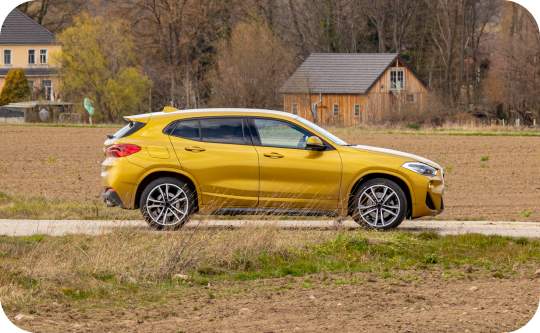What is the Luxury Car Tax in Australia
What is the Luxury Car Tax in Australia?
It’s no surprise that for many people, it’s the dream to one day own a luxury car, but when you learn just how heavily luxury cars are taxed in Australia - you might just change your mind.
The luxury car tax or LCT for short, is a tax paid on some cars above a certain value (GST-inclusive) set by the ATO. It applies to the sales of cars that are two years old or less, which means they were either manufactured in Australia less than two years ago or imported here. The value of a car is determined by its retail price, including GST and any customs duty, dealer delivery charges, warranties, and the costs of extra items like modifications that are applied to the car before it’s delivered. The tax is mostly paid by businesses like car dealerships that sell or import luxury cars, but can also be paid directly by individuals who import cars themselves.
What is the luxury car tax threshold?
The luxury car tax is 33% on the dollar amount of the car’s value that’s over the LCT thresholds. According to the Australian Taxation Office (ATO), the thresholds for the 2022/23 financial year will be $84,916 for fuel-efficient vehicles and $71,849 for other vehicles. For the 2021/22 financial year are $79,659 for fuel-efficient vehicles, and $69,152 for all other vehicles, and are effective from 1 July 2022.
How to calculate luxury car tax?
If the luxury car tax is applicable to the car you’re buying, then calculating the luxury car tax can be done using this formula:
(Luxury car retail value – LCT threshold) x (10 ÷ 11) x (33 ÷ 100).
The important components of this formula are:
- The car’s retail value (including GST and customs duty, but excluding other Australian taxes and fees, such as stamp duty and registration)
- GST, which at the time of writing is 10%, and is represented by the (10/11) part
- The 33% tax rate, which is the (33/100) part
For example, let’s calculate the LCT on car worth $80,000:
The retail price of the car is $80,000, so the amount applicable to the LCT is $11,260 ($80,000 – $68,740). Multiplying this amount by 10/11 is $10,236, and then again by 0.33 is $3,378.
Therefore, a luxury car with a retail value of $80,000 would cost the average buyer $83,378, after factoring in the luxury car tax.
But if we’re really talking about luxury cars, let’s assess the LCT of a luxury car with a $500,000 price tag. At $500,000, that car would attract an extra cost of around $130,000, thanks to the luxury car tax. So it’s reasonable to say that LCT can be pretty expensive.
Calculating the luxury car tax this way is fairly simple. However, if you want to double-check the numbers with a reputable source, there are luxury car tax calculators you can use to find out exactly how much tax you’ll be paying on top of your (potential) new wheels.
Are there any exemptions to the luxury car tax?
There are some other exemptions to paying the LCT, according to the ATO these include:
- the buyer has an ABN and will use the car for specific purposes.
- the car was manufactured in Australia more than two years before the sale.
- the car was imported to Australia more than two years before the sale.
- the car is exported as a GST-free export.
- the car is registered for use as an emergency vehicle (or is intended to be one, such as an ambulance, firefighting vehicle, police car, or search and rescue vehicle).
- the car has been modified to be used for people with disabilities.
- the car is a motor home or campervan.
- the car is a commercial vehicle designed mainly for carrying goods and not passengers.
Luxury car tax is also waived in general on new cars that still haven’t been sold after two years.
Does the luxury car tax apply to used cars?
The LCT doesn’t apply to certain used vehicles or private sales, as the LCT will have already been paid when the car was first imported and sold.
However, the exception to this rule is when the car is still under two years old and has actually increased in market value. In this instance, a car bought from a dealer would still require LCT to be paid on the increase, but this is very unlikely as most cars are known to depreciate in value quite quickly.
If you’re ready to shop for a new ride, speak with one of our lending specialists today to discuss car loan pre-approval.
Find out in under 2 minutes if you qualify for one of our low rate car loans.

About the article
As Australia's leading online lender, loans.com.au has been helping people into their dream homes and cars for more than 10 years. Our content is written and reviewed by experienced financial experts. The information we provide is general in nature and does not take into account your personal objectives or needs. If you'd like to chat to one of our lending specialists about a home or car loan, contact us on Live Chat or by calling 13 10 90.






















